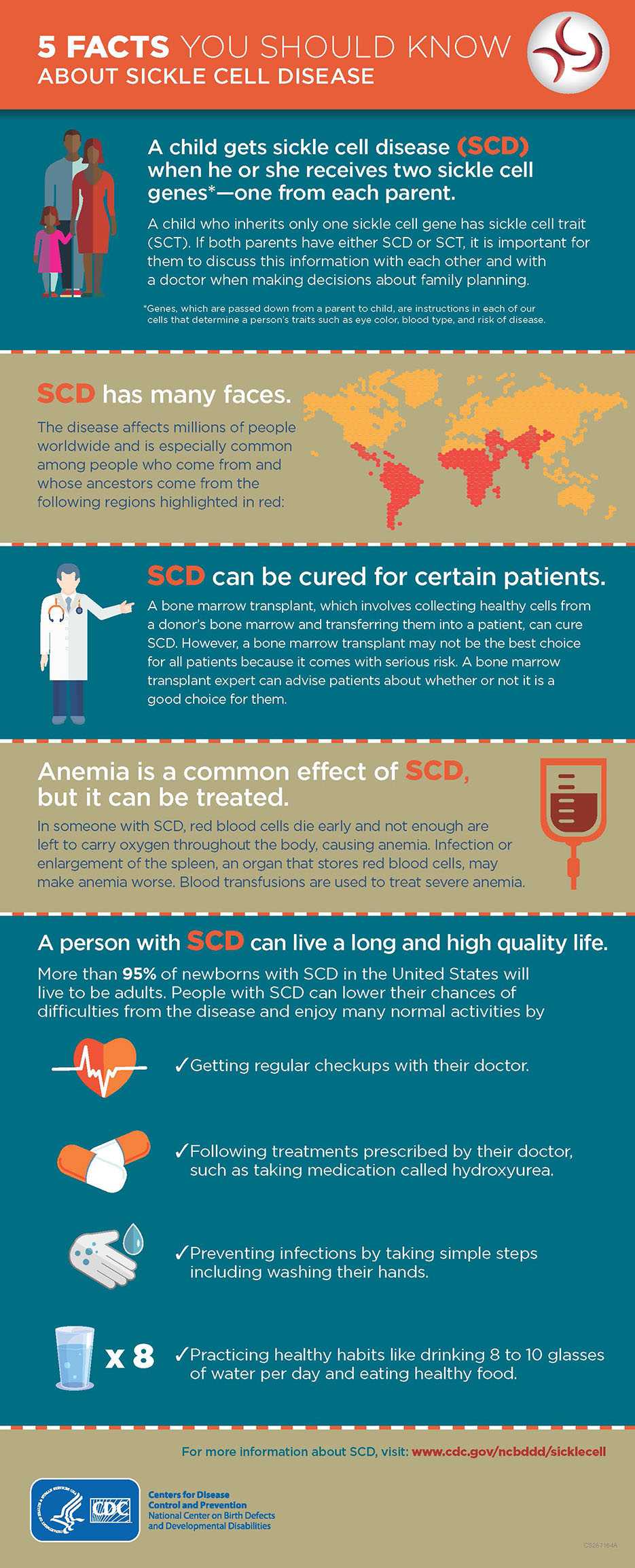5 Facts You Should Know About Sickle Cell Disease

Download:
5 Facts You Should Know About Sickle Cell Disease [PDF – 198 KB]
Description
Title: 5 Facts You Should Know About Sickle Cell Disease
A child gets sickle cell disease (SCD) when he or she receives two sickle cell genes*—one from each parent.
A child who inherits only one sickle cell gene has sickle cell trait (SCT). If both parents have either SCD or SCT, it is important for them to discuss this information with each other and with
a doctor when making decisions about family planning.
*Genes, which are passed down from a parent to child, are instructions in each of our cells that determine a person’s traits such as eye color, blood type, and risk of disease.
SCD has many faces.
The disease affects millions of people worldwide and is especially common among people who come from and whose ancestors come from the following regions highlighted in red:
SCD can be cured for certain patients.
A bone marrow transplant, which involves collecting healthy cells from a donor’s bone marrow and transferring them into a patient, can cure SCD. However, a bone marrow transplant may not be the best choice for all patients because it comes with serious risk. A bone marrow transplant expert can advise patients about whether or not it is a good choice for them.
Anemia is a common effect of SCD, but it can be treated.
In someone with SCD, red blood cells die early and not enough are left to carry oxygen throughout the body, causing anemia. Infection or enlargement of the spleen, an organ that stores red blood cells, may
make anemia worse. Blood transfusions are used to treat severe anemia.
A person with SCD can live a long and high quality life.
More than 95% of newborns with SCD in the United States will live to be adults. People with SCD can lower their chances of difficulties from the disease and enjoy many normal activities by
- Getting regular checkups with their doctor.
- Following treatments prescribed by their doctor, such as taking medication called hydroxyurea.
- Preventing infections by taking simple steps including washing their hands.
- Practicing healthy habits like drinking 8 to 10 glasses of water per day and eating healthy food.
For more information about SCD, visit: www.cdc.gov/ncbddd/sicklecell
- Page last reviewed: June 22, 2017
- Page last updated: June 22, 2017
- Content source:


 ShareCompartir
ShareCompartir